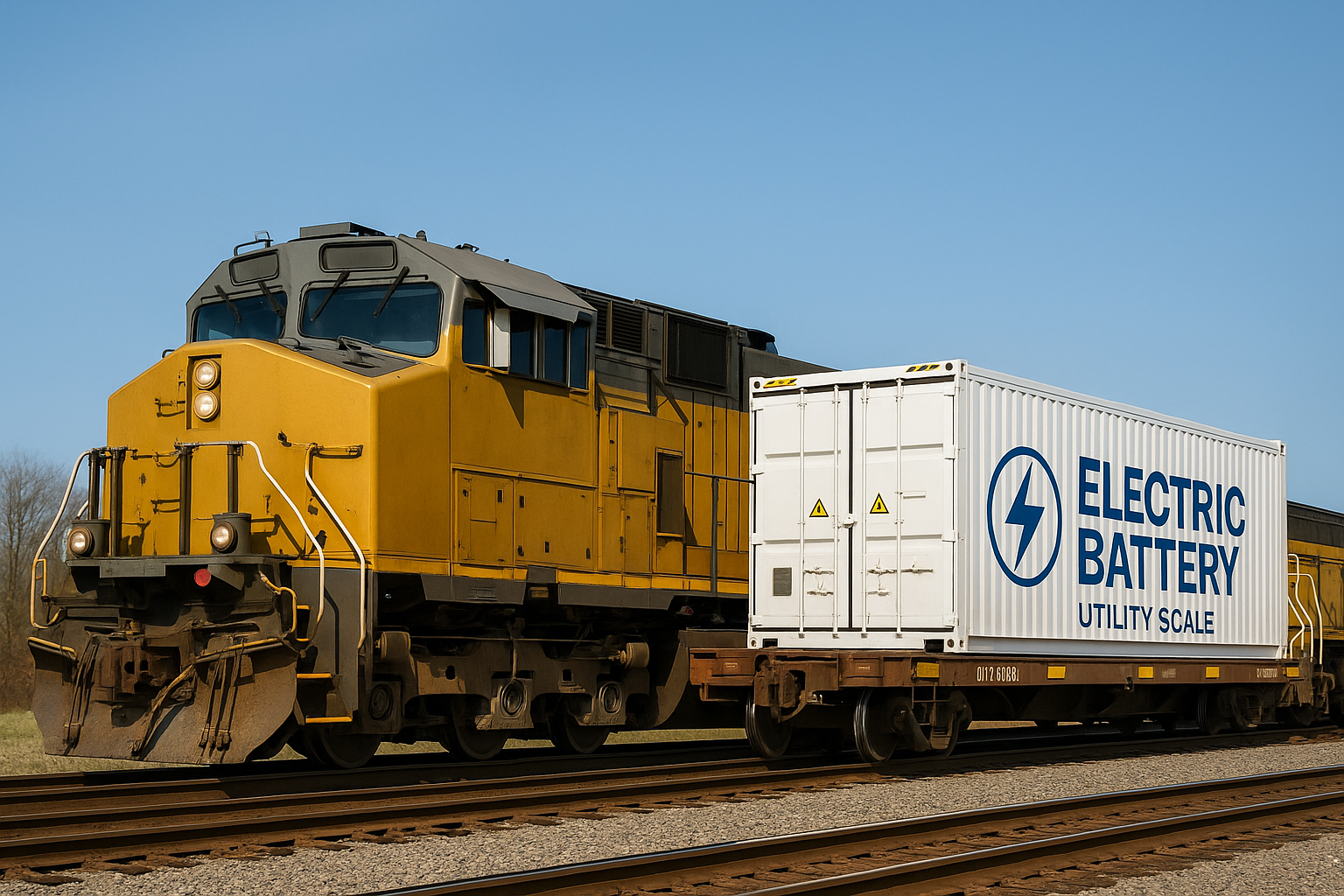
SunTrain Bets on the Railroads to Deliver America’s Renewable Energy Future
By Daisy Carlson
As debates over new transmission lines stall clean energy progress across the United States, a bold and unexpected solution is gathering momentum—not in the sky or underground, but on the rails.
Enter SunTrain, a new project development company that proposes to move grid-ready, renewable electricity using battery-laden railcars. Tapping into the nation’s 140,000 miles of existing freight railway—much of it built to serve now-declining coal industries—SunTrain offers a low-cost workaround to one of clean energy’s greatest bottlenecks: transmission.
“The infrastructure is already there,” says a SunTrain spokesperson Christopher Smith. “Why not use it to carry clean electricity in the form of batteries, instead of coal."
At its core, the model is deceptively simple. Renewable power—mainly from remote wind and solar farms—is stored in utility-scale battery containers fixed to rail cars. These mobile energy units then travel existing rail lines to substations and population centers where power is most needed, bypassing the snarled regulatory, environmental, and stakeholder challenges of traditional high-voltage transmission lines.
It’s a logistical reimagining that reflects both ingenuity and urgency. According to SunTrain, the permitting timeline for conventional transmission infrastructure can stretch well over a decade—an eternity in a world scrambling to meet climate targets. By contrast, rail-based delivery leverages private rights-of-way and existing logistics systems, potentially slashing both costs and deployment timelines.
The concept has already drawn attention from clean energy advocates and investors frustrated by the gridlock—literal and political—slowing down de-carbonization. In its pitch, SunTrain doesn’t just sell mobility; it sells adaptability, resilience, and a path forward with out having to build cost prohibitive new transmission lines. It is using extensive, existing infrastructure of the US Rail system.
Still, questions remain about scale, safety, and the fine print of regulation. Can battery-laden trains integrate seamlessly with grid infrastructure? Will utilities accept rolling megawatts? How will routing, scheduling, and load balancing be managed?
Experts are intrigued. “It’s not the first time someone has tried to rethink energy distribution,” says a senior engineer at a national lab, “but using the rails in this way is genuinely innovative. The key will be how quickly they can demonstrate real-world reliability and cost-competitiveness.”
SunTrain’s broader vision is as audacious as it is timely: to de-carbonize America by rail. By transforming a 19th-century industrial network into a 21st-century energy backbone, the company aims to electrify more than just transportation—it hopes to electrify the grid itself.
In an era when climate solutions often require starting from scratch, SunTrain offers something rare: a reinvention, not a reinvention of the wheel, but of the tracks beneath it.